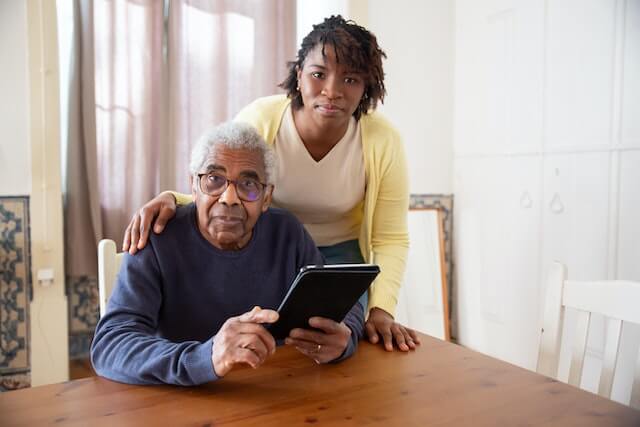
Find the resources you need by using keyword search and clicking enter or by filtering by category.
All Resources
join the community
VERIFIED businesses
Technology helps caregivers
As a person ages and develops physical or cognitive issues, they need more care. The majority of people 65 and older want to age in their homes. They do not want to go to a nursing home. Family members often cannot provide 24/7 care, so they must seek other help methods. Finding a qualified caregiver is challenging. Fortunately, technology helps caregivers and allows people to age in place.
Understanding the caregiving crisis
There is a caregiving crisis affecting in home and senior communities. Discovering a qualified caregiver is difficult. California in-home private caregivers charge $22 to $45 per hour, depending on location. Most caregivers require four hours daily, multiple days per week, making it expensive. In addition, there is a caregiving shortage. Consider home health and personal care aides in the senior living community average a 50% turnover rate. When recognizing the attrition rate, the industry predicts a need for an additional 6.2 million direct care jobs between 2019 and 2029. These projections were before COVID, and COVID just worsened it. To address this crisis is technology.
Can technology help caregivers and the crisis?
Yes! Fortunately, experts are developing technology to address the caregiving crisis. Innovative technology creates the opportunity to automate low-level tasks, which helps caregivers in an older adult community and reduces job stress. Motion sensing technology and wearable devices help too.
What technology and devices are available to help caregivers?
- Pendants; The person wears a pendant to push and call for help.
- GPS trackers (wearable bracelet or necklace for dementia patients who tend to wander off or get lost easily) tracks a person’s location.
- Sensory devices to monitor falls and unusual movement for high fall-risk people.
- Cameras that apply sensors with artificial intelligence (AI) and predictive analysis detect when a resident moves, for example getting out of bed, walking to the bathroom, and falling.
All this technology helps reduce the costs of a caregiver since there is a way to monitor the person and not physically be in the room. The technology alerts another person if there is a problem so that they can get the necessary help. Plus, families can keep an eye on their aging loved ones while giving the person a sense of privacy and independence.
The future of technology – digital caretakers
Another wave coming down the pipeline is digital caretakers. Technology helps tech-savvy caregivers to help aging people with their day-to-day tasks. Virtual caretakers can provide reminders for medication, and appointments, provide support, and answer questions or concerns someone may have. Plus, they can monitor and call for help if a fall is detected. It’s a way of caring for an older adult needing assistance. Moreover, virtual caregivers can monitor multiple people simultaneously, reducing the cost of various caregivers.
With all this technology, human interaction is still necessary.
Though all this technology is available, it is essential to remember the importance of human interaction. Family, friends, and caregivers still need to stop by and help. Overall, all this technology aims to monitor and provide necessary assistance, still allowing privacy and independence for the recipient.
Technology has expanded. STAGES is here to educate people about this.
top verified companies
@2024 STAGES FOR LIFE, LLC. Designed Intentionally by MOK
information
sales@stagesforlife.com
Articles
Government
verified businesses
Medical Services
Get Verified
Contact
Privacy Policy
Terms and Conditions
Downsizing
Housing and Care Services
Non-Profit
Professional Services
Medical Services
Professional Services
Non-Profit
Housing & Care Services
Government
Downsizing
Events
Newsletter